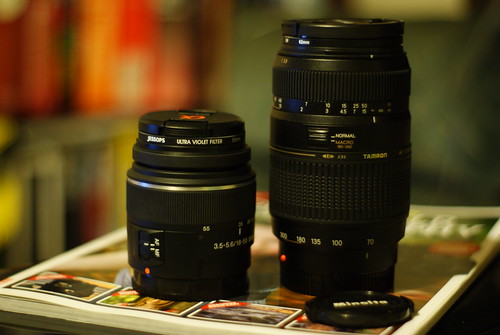What camera should I buy? and the questions raised by a lot of friends who are just starting to learn photography and was gathering information right equipment for them to buy. Along with the increase of cameras on the market, as well as DSLR cameras that have been purchased either by reason of the low price and want to upgrade their device, finally emerged the question of "what is the right lens for my DSLR cameras?"
It may be difficult to answer this question at this time where every manufacturer of digital cameras offer a variety of lenses with the quality and price are very diverse. Keep in mind also that every photographer has a different photo styles, they have a character of its own shooting, and that could be its own complexities when answering the question "what is the right lens"
Below is a bit of writing to review the different types of lens DSLR camera on the market offered by the camera manufacturer. We will not discuss in detail a lens, but it will be a little give a brief introduction of the term and the type of lens DSLR on the market that can be considered when the waterfall hunting buddy DSLR lenses.
DSLR LENS TYPE :
- Standard Lens - This is a term that is slowly disappearing from the little world of photography terminology. Used to describe the range 50mm lens, because the lens is usually mounted on the camera film camera.
- Kit Lens - Currently most of the lens is a single package with a DSLR camera for sale, and this lens is usually known as a kit lens. This lens is a zoom lens mostly, and functionally known as a multi-purpose lens that is designed for the benefit of everyday shooting. Professional photographers almost always buy the camera body and lens upgrade according to their needs.
- Prime Lens / Fix Lens - Fix lens is a lens that has only one Focal-Length. Sometimes the lens is a lens that is less popular where the photographers are comfort with lenses that have a range of Focal-Length in their hands (see zoom lens review below), but somehow primes fatherly worth considering. The zoom lens does have benefit on the quality they offer, but also known prime lens with the image quality and speed. When most people are comfortable with a zoom lens, the opposite I would enjoy the challenge of using a fixed lens, and they carry something in my photography world, and normally I would feel a bit lazy when the zoom lens attached.
- Zoom Lens / Tele - Zoom lenses are the most popular DSLR lenses today, comes with a focal length range of configurations and levels of quality. The most visible advantage to using this lens is, my friend does not need to get closer to the subject to get more stringent framming. This lens can provide short or long range. Things to remember when buying a camera is, the longer the focal length the more it will affect the camera-shake. The camera with a focal length much like (300mm) with Image stabilization has been facilitated (IS) to reduce camera-shake.
- Macro Lens - The lens is designed specifically for photographing objects close-up.many DSLR cameras are equipped with the settings 'macro', but using a macro lens that will actually produce more alive and allow Buddy to take pictures with a size that is very close to the object.
- Wide Lens - As the name suggests, these lenses let users to take pictures and get a very broad perspective. Wide-angle lens used in refractive landscape shooting. Wide lens comes with a lens focal length as fixed and zoom lenses, although it has a bit of range on the focal-length. Note that many more or less wide-angle lens sometimes give effect to 'distort' in the images, especially in edge images with a slightly curved shape. For some people could be a nice effect, but it also means that sometimes unwanted effects.



0 comments:
Post a Comment